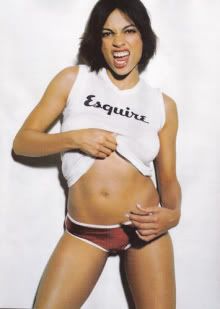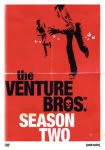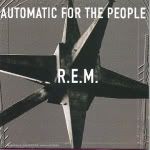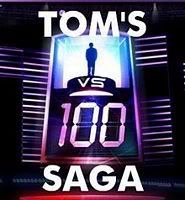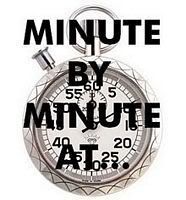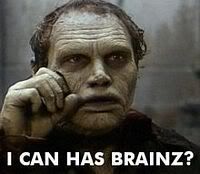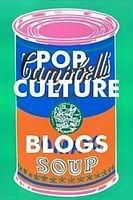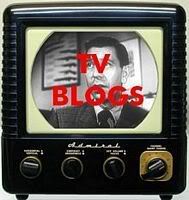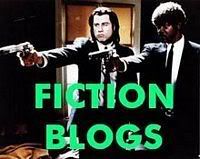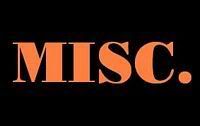MOVIES: How the West Was Won
I watched How the West Was Won last night (the 1962 Cinerama feature, as opposed to the 1970s miniseries). It was good, not great, but it had at least one scene that will stick with me forever.
First of all, let's get past the "Don't you mean, How the West was stolen by whitey from the Native Americans?" kind of thing. I'm just looking at it as a movie, not as an historical document.
Secondly, this is one of the most amazing casts ever assembled... but it's not the best film for any of them. Jimmy Stewart, John Wayne, Gregory Peck, Henry Fonda, Richard Widmark, Walter Brennan, Eli Wallach, Debbie Reynolds, and Spencer Tracy narrating -- not too shabby. But the writing is relatively weak, and, while this film may have been notable for its progressively bold action and violence, it didn't break any boundaries in its tired, corny love stories.
It sure is a beautiful picture to look at though. Beautiful, and unusual (and sometimes annoying). It was filmed in the Cinerama process: three cameras placed side-by-side-by-side, capturing a wider, more vivid, detailed picture -- a true panorama. But it was meant to be projected on special Cinerama screens, which I'm assuming consisted of a center screen, with two connected side screens like wings bent slightly inward toward the audience. Some Cinerama movies were also filmed simultaneously with a single, widelens camera, to be shown in non-Cinerama theaters. (That's a lot of cameras!) Unfortunately, How the West Was Won was one of only two Cinerama features that were not. So the only version that exists now, and the version which is on the DVD, is of the three Cinerama reels.
This means the single wide picture on your screen is visibly divided into three parts, like three boxes in a row. They all form one continuous picture, but with two distinct lines running from top to bottom, trisecting the image. The directors often attempted to hide those lines, with trees or door frames or what have you conveniently positioned right in the middle of the lines, but they're still a distraction. Also, the side boxes are at slightly different angles. If someone walks out of the center box and into a side box, his image distorts slightly as he crosses the line, like you're seeing his image pass behind a pane of glass turned slightly toward you. Maybe this wasn't so jarring in the special Cinerama theaters, but on your TV screen, it's very odd to see, for example, a train stretch across the horizon -- bent in two places. This effect often leads to the primary actors doing their best to remain motionless, so they don't stray out of the center box. And it creates a frequent static quality to the image -- if the camera moved, the lines would shift, so the cameras stay still for very long periods of time. Finally, sometimes the coloring is slightly different in one (or all) of the boxes, suggesting different degrees of the wear and tear of aging on the three negatives. So there might be a bright blue sky in 2/3 of the screen, and a dingy, faded, greyish-blue sky in the other 1/3. The end result is a fascinating, if frustrating, piece of work.
Anyhoo, the whole point of this was to write about the one memorable visual that made me glad I saw this picture. It comes during the "Railroad" segment of the film. (Another digression: the film is divided into five sequences, and directed by three directors. John Ford directed "The Civil War" -- that's the segment John Wayne briefly appears in, as General Sherman; Henry Hathaway directed "The Rivers," "The Plains," and "The Outlaws;" and George Marshall directed "The Railroad.") The railroad men have promised the Arapahoe Indians that their train tracks will not infringe on their hunting, that they will not bring buffalo hunters and settlers to poach their game and overrun their territories. But the railroad men -- mostly Mike King, played by Widmark -- are big fat liars. Buffalo hunters and settlers are there in no time. This gets the Arapahoes all bent out of shape. So they strike back at the railroad camp. And they do it by stampeding a herd of buffalo straight through it.
This is one of the most breathtaking sequences I've ever seen on film. This is true spectacle. An enormous herd of buffalo crests the hill above the camp, and it pours down into the camp... and pours, and pours, and keeps on coming until the hillside is absolutely flooded with the wild-eyed, rampaging beasts. They charge directly for the camp, the thunder of their hooves powerful enough to collapse structures. And then they hit, and everything in their path is trampled. They punch through the camp like a fist through newspaper. It goes on for minutes on end, and it's absolutely awesome.
It's the reality of it that overwhelms me. These aren't animatronic animals. These aren't CGI beasts. These are real, flesh-and-blood, large-as-life buffaloes. Hundreds of them. It's really happening. That blows me away.
There are some great, wonderful things that can be done with special effects. There are some tremendous movie moments that couldn't happen without fakery. There's the first sight of the dinosaurs in Jurassic Park. There's the "bullet time" action in The Matrix. There's Dave touching the monolith in 2001: A Space Odyssey. But as amazing and groundbreaking as those moments are, it's when movies create epic achievements out of real life that I'm really moved. For example: the jaw-dropping air battles in Howard Hughes' Hell's Angels. Martin Scorsese recreated them in The Aviator, using computer trickery, but it can't touch the real thing. Dozens of actual planes engaging each other in fantastic aerial maneuvers, the likes of which had never been seen before in film, and never after, for that matter. Or then there are the battle sequences in Akira Kurosawa's Ran: hundreds -- maybe thousands -- of soldiers charging and clashing and killing and dying, all bright colors and dizzying motion, and all of it actually happening. Real people, real horses, real armies doing (fake) battle on an unbelievably huge scale.
And now I can add to these moments the buffalo stampede in How the West Was Won. It's a grand moment in filmmaking. It's not a great movie, but that one great scene makes it unforgettable.

